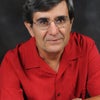In 1988-1989, I was a visiting professor of environmental studies at Humboldt State University in northern California. By then I was convinced that large farmers and large companies were responsible for most of the country's environmental wounds.
My years with the US Environmental Protection Agency had taught me of the intricate legal schemes corporations insert into the country's laws to force the government to do their bidding. In addition, I witnessed the corrosive and debilitating effects of corporate power on the EPA. The industry even recruits members of Congress and the White House staff to make its agenda the government's agenda.
But nothing had prepared me for the dark world of tree-killing culture of Humboldt County where Humboldt State is located.
Some of my colleagues, especially Bill Devall and Rudi Becking, helped me face America's Third World lurking all around the university.
Bill Devall and Rudi Becking taught respect for the natural world. They highlighted the science that helps us understand the natural history of animals and plants.
But leaving this theory and entering the reality of Humboldt County was disorienting. Students saw an endless number of trucks carrying logs out of the redwood forest near the university. In fact Humboldt State is within the Redwood National Park, which Congress established between 1968 and 1978.
Devall did not have kind words for those involved teaching about "resources," much less about corporations logging the forest he loved. He told me no one would miss the eventual extinction of destructive humans.
Becking and some of my students drove me to the scene of the crime: the clearcutting of trees as old as the Parthenon. The results, I remember, were like those of bombing. Nothing was left standing. Clearcutting wiped out both trees and the land.
In early August 1988, a graduate student drove me to Crescent City. It was spectacular going up and down the hills in the midst of the giant trees of the North Coast, the blue ocean on our left, the foamy waves smashing against the rocks and sandy beaches. The forest had a primeval beauty and silence. The top of the trees touched the clouds, creating the sprinkles of moisture falling on our car.
Outside of the tiny timber town of Orick, I saw a mile long assembly of motor homes parked a few meters from the ocean. Coming from the redwood paradise straight onto more than 200 monster-cars was like having a nightmare.
Eventually we reached the courthouse of Crescent City where we met with my colleague Jerry Krause. While wandering in the corridors of the courthouse, my eyes were glued to a thick pile of official notices describing logging taking place all over northern California, next to the Smith River, next to the Klamath River, and close to Crescent City. Looking at these proposed actions and seeing the word "clearcutting" in all of them was like I was thunderstruck.
This state-sanctioned violence was going on in California.
For millions of Americans California is the Golden State, the cornucopia of the world. No wonder California is competing with the United States. It has its own Dream. Trees are part of that California Dream. The world's largest, tallest, and oldest trees grow in California.
"Trees in Paradise" by Jared Farmer (Norton, 2013) examines the natural and unnatural stories of trees in California. "Read this book," Farmer says, "and you will never see a living landscape the same way again." Maybe. Farmer also challenges us to believe that "much of California, including sun-drenched lowland habitat, was basically treeless before European colonization."
Farmer starts his book in 1848, the year the United States appropriated California and the west from Mexico. The discovery of gold in California triggered a vast migration of people equivalent to "two successive earthquakes of awesome magnitude."
Farmer says that some of the nineteenth-century migrants to California practiced "tree culture." That is, in an effort to hide the ravage of the gold rush, they embarked on afforestation and landscaping on a grand scale. They planted drought-tolerant trees in grasslands and wetlands. They dammed and diked rivers, sending the water to groves of subtropical fruit.
This "reclaiming of the wastelands" created shady parks, orchards, garden cities, campuses, and boulevards. Tree culture remade California: "the whole region," says Farmer, "contains more trees today than at any time since the late Pleistocene. The conquest of California thus begat the greening of California - an outcome easy to see yet easy to miss because it looks so natural."
This is hard to believe, that the conquest of California came with benefits. If you ask the countless indigenous people of California, they might object to this rosy picture. After all, they perished from their encounters with the conquistadors and their tree culture. Farmer speaks of that genocide, however.
The book begins with giant sequoias and coast redwoods, the trees surrounding Humboldt State. As early as the 1950s, timber men had almost wiped out millions of old growth trees. Environmentalists fought feeble battles with loggers and timber companies. So by the time I was teaching at Humboldt State, there were merely fragments of these trees left. But, according to Farmer, second growth trees sprang up and today "there are more California redwoods than there were a century ago." Again, it would be difficult to prove or disprove such a statement.
Nevertheless, "Trees in Paradise" is an important and well-written scholarly book of more than 500 pages. It is more than a story of conquest. In addition to the redwoods, it covers eucalyptus, citrus, and palm trees. It is about botanical multiculturalism and globalization, the sharing of the regional and the global, the indigenous and the imported, the botanical, the cultural, and the domesticated. It is an intimate look at the "human-arboreal bond." But, fundamentally, this book is a history of California.
Farmer is right. Trees made California modern, though the mania of loggers for clearcutting the ancient trees left a permanent stain in the California Dream.
